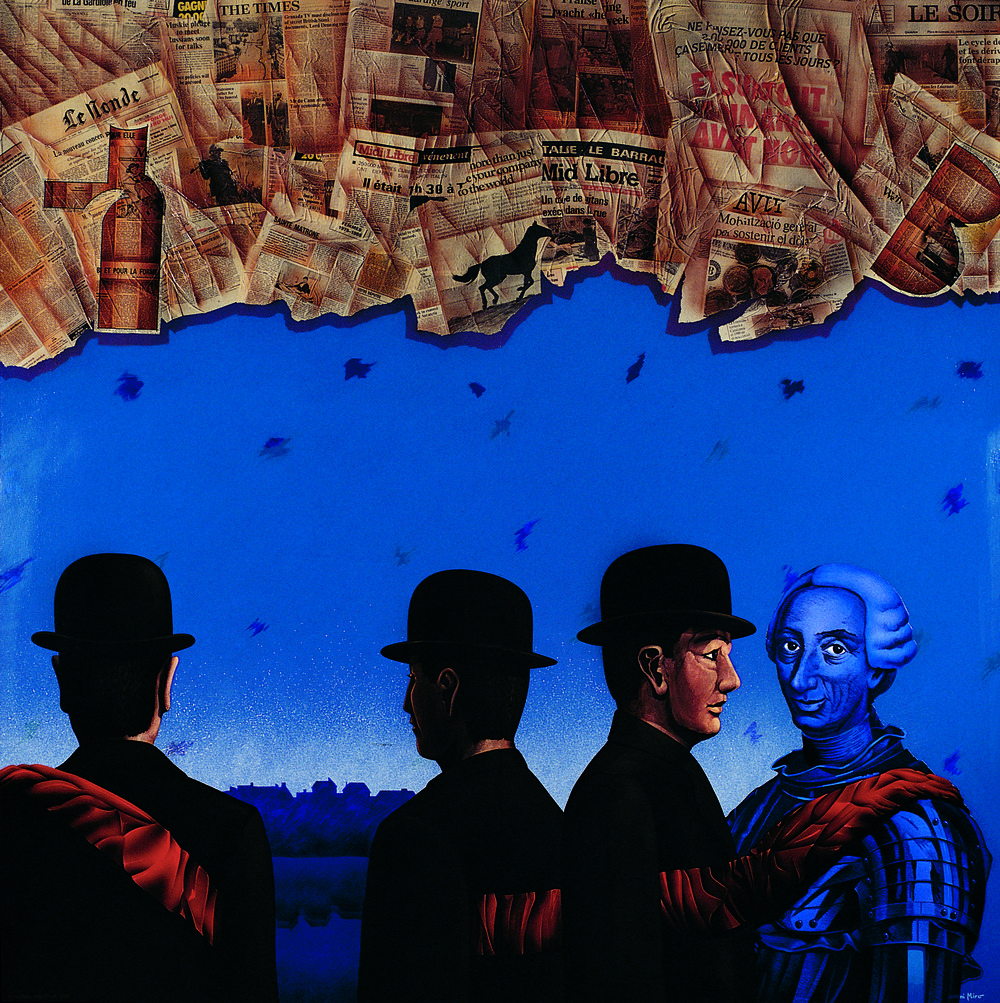El misteri republicà (The republican mystery)
This picture is part of the ‘Paint Painting’ series and draws on two other iconic works in the history of art. The main source of inspiration is the work by the Belgian surrealist Magritte, titled Le Chef-d’Oeuvre ou Les mystères de l’horizon [The Masterpiece or The Mysteries of the Horizon] (1955). The name of Miró’s work partially reflects Magritte’s title. The other main work it draws upon is the famous official portrait of Charles III, painted by Mengs around 1765. There are also references to the Cubism of Gris and Picasso. As is the case in many other pictures in this series, the artist uses fragments of works from the art canon to come up with messages coming from the analysis of the political reality of the moment, in the form of pictorial collages.
In this case, the issue is the debate between Monarchy and Republic. The consensus reached in 1978 during the country’s transition from dictatorship to democracy was that Spain should be a Constitutional Monarchy. Parties with a republican tradition, such as the PSOE (Spanish Socialist Party) accepted this proposal in order ensure political stability, also accepted by the right-wing parties. After a decade of democracy in Spain and in the light of the country’s social transformation in the early years of the Socialist Government, some critical sectors in the party demanded the establishment of a third republic.
One can interpret Magritte’s enigmatic picture as a taciturn character pondering a decision. Miró suggests the same albeit in the context of Monarchy versus Republic in Spain. In Miró’s work, the crescent moon appearing in three different moments in Magritte’s work has vanished to be replaced by a few small, loose lines that make up a starlit sky topped up by an upper strip formed by coloured cuttings from international newspapers, revealing its condition of topical subject at the time.
The figure of Carlos III in Meng’s neo-classical portrait is brought in almost as a drawing, reversed to face left, instead of right as in the original work. By representing him using black brush strokes over the blue background, he expresses the king’s discreet presence in the debate. The only thing that stands out chromatically from the portrait of Carlos III is the king’s red sash on his waist, which goes round the hatted man, metaphorically suggesting submission.
Santiago Pastor Vila
